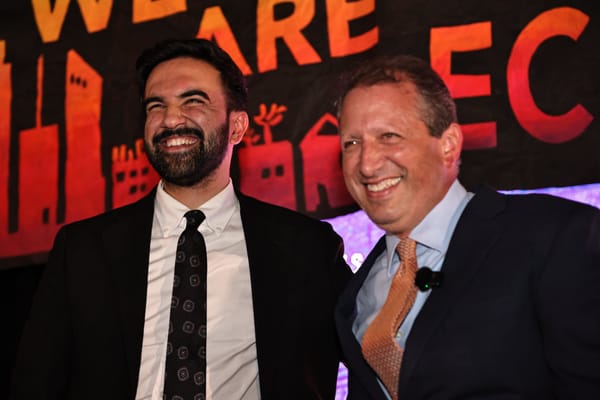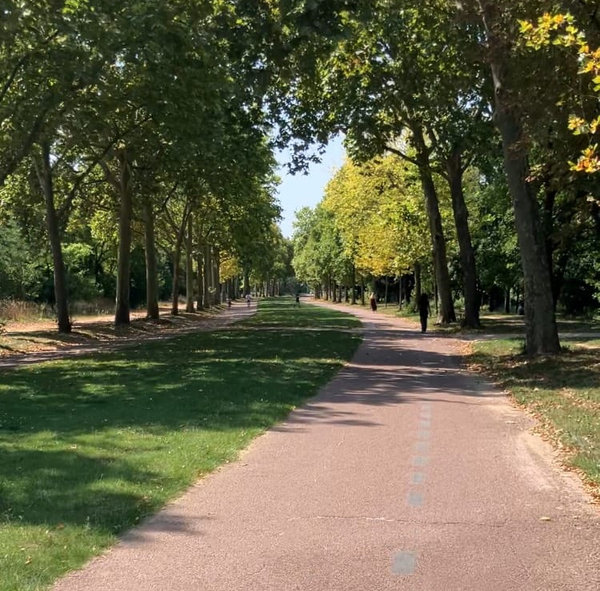Is this what power feels like?

Is this what power feels like?
Inside the Zohran Mamdani Election Night Party
The wild diversity of New York packed into Zohran Mamdani’s election night party, but as I walked the floor of the Brooklyn Paramount all of them started to sort into three kinds of people.
The first were the ones I knew and kept bumping into – comrades, colleagues, acquaintances, and friends-of-friends across New York’s Left. People I organized with in a housing campaign a decade ago, a coworker from an election many cycles past, someone I volunteered with last week. As we waited for the speeches, you could try to travel twenty feet to get a drink with one of these peers, but each bump into greetings, congratulations, and conversations that required you to peel away. If you’re my age, these are the Millennials radicalized by Trump 2016, Occupy Gen X-ers who found stable nonprofit work, the new Gen Z ground grunts and rising social media stars. They are blobs of union organizers wearing the same letters and colors, Jews for Zohran in custom merch, housing champions in the array of New York style (with a dab of campaign or DSA flair, for those willing to conform).
The second kind were the people you’d seen online, on TV, or on the stage, but never interacted with – the movement celebrities of all kinds. These are people professionally required or accustomed to a little more formality, even at a party (never know when you’ll need to do an interview). But in the time between the AP call for Zohran and the first speech, they too were in the hoi polloi of the party. In one short arc from the back of the floor to a bar, I was able to thank an organizing trifecta: the legendary Marshall Ganz, then anti-Cuomo dynamo Lindsey Boylan, and then Working Families Party director Maurice Mitchell. There was Michael Blake, there public advocate Jumaane Williams, there congressman Adriano Espaillat, and over there comptroller Brad Lander. Our socialists in office peppered the venue — I saw Jabari Brisport, Alexa Aviles, Marcela Mitanyes, Emily Gallagher, Julia Salazar— electeds whose campaigns built up the muscle for this one. Beside them, or interviewing them, were the likes of Amy Goodman and Mehdi Hasan, Adam Friedland and Hasan Piker, the stars of old and new and newer progressive media. Here, if all a tiny bit glossier, all these people were part of the mix.
The third were all of the unfamiliar faces: the vast array of constituencies that made this a truly popular movement. Africans for Zohran ahead of me in the crowd, South Asians from Kensington behind me, Satmar Jewish leaders across the room; workers from the furthest parts of the Bronx and Queens, bodega owners from across the city, big donors and board room connectors in with everyone else.
Why bother taking such a census and sorting out the guests? Because this hasn’t been necessary before. The Mamdani victory party was a room that showcased the new breadth and depth of New York City’s Left and, yes, perhaps previews what it can look like across this country. For all the chatter on coalitions and crosstabs, you don’t often get a chance to see all these people right in front of your eyes. But beyond diversity, this room had scope. People at the top of city government and people who’d never canvassed before this campaign; diehard young socialists, Resistance Boomers, and middle-aged businesspeople who love this city. The jokes about the incestuous and cloistered Left are jokes because they’re based in truth: this is not that Left. The thickness of relationships among that first group of people you know, the influence vested in those people you’ve seen, and the reach represented by those people you don’t recognize, adds up to a feeling we aren’t too familiar with: power. Power, we are learning, is not knowing everyone in the room: power is knowing everyone in the room is fighting for you even though you could never meet all of them.
After Zohran’s speech, I took a moment to stand at the side of the venue to just watch the crowd. It looked like a culmination as much a beginning: people dancing or hugging one another goodbye, as well as pockets of excited chatter, friends making plans about where to go next. This power here reflected a campaign – if not a broader movement – that is both ideologically clear and pragmatically matured. It is power built on both a blunt, catalyzing message to the masses and finesse in the politics of individual egos. That’s power that can shock a primary and stabilize a general. Finally, at long last, we will get to see what it looks like when it governs.



